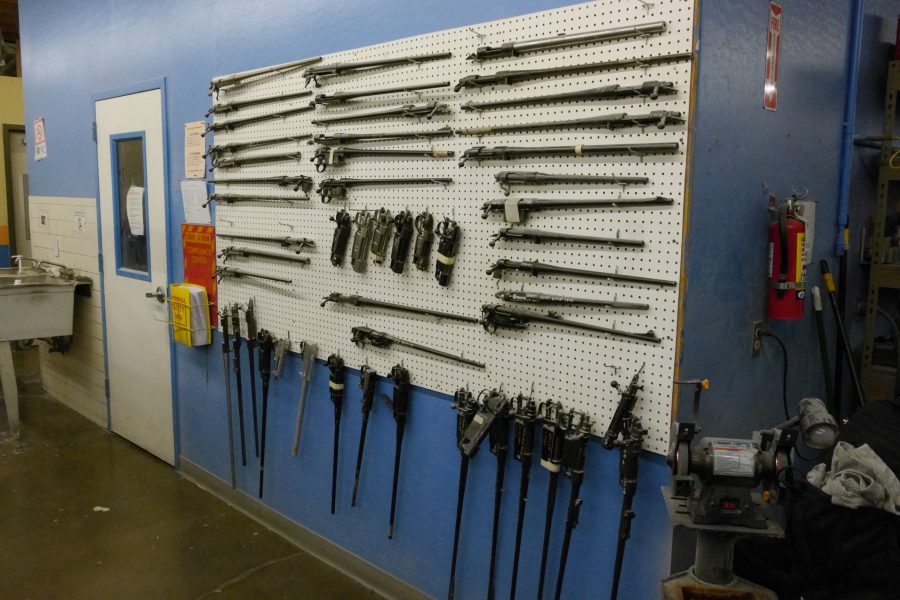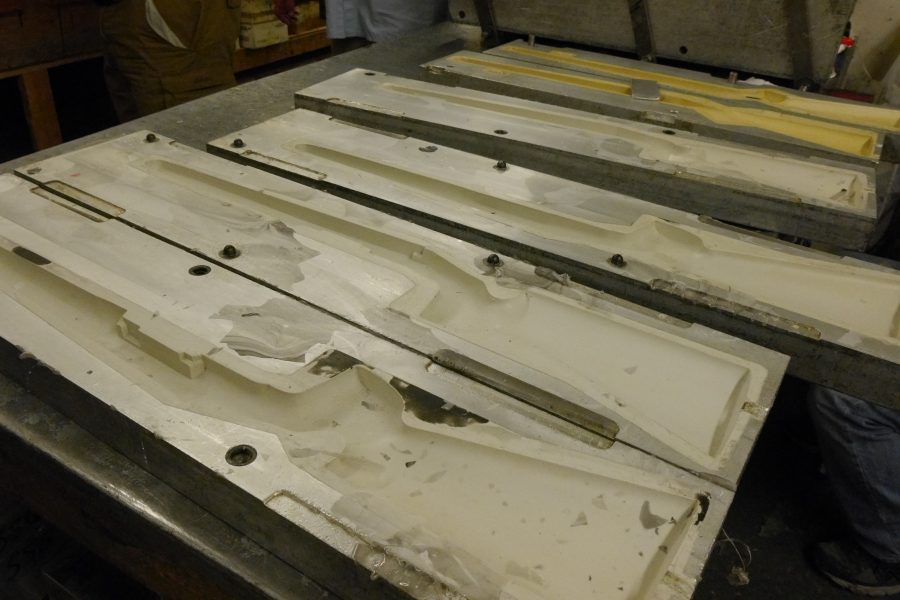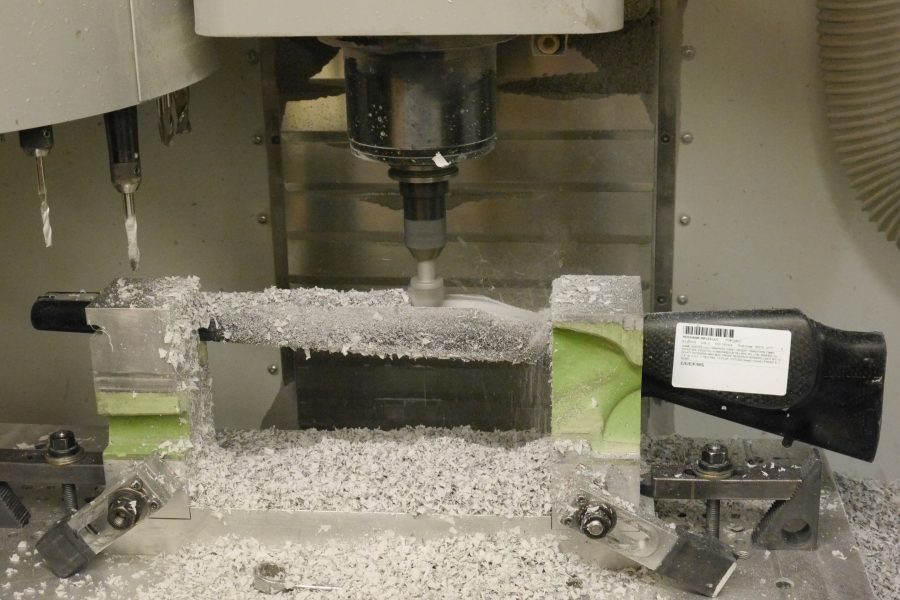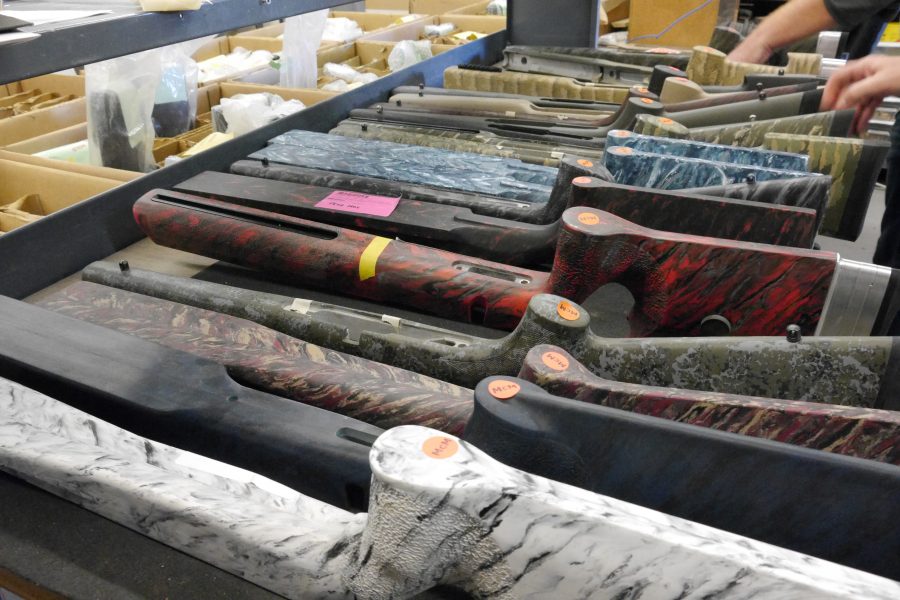
There are a handful of family names in the firearms industry where their mere mention instantly brings to mind quality and craftsmanship. Ruger and Barrett probably top the list for firearms, but when it comes to stocks there’s only one name that matters: McMillan.
The McMillan family has been making fiberglass rifle stocks for roughly three generations now for competition shooters, military snipers and hunters around the world. Their products aren’t exactly cheap compared to the injection-molded competition, but given the care and craftsmanship that go into each hand-crafted stock it might seem more like a bargain. I took a tour through their facility a couple of weeks back to watch that whole process from start to finish.
McMillan doesn’t cater to the big box stores. Sure there are some “production runs” for online retailers and others. But according to Kelly McMillan, 90 percent of their stocks are custom orders. People call or email them. The company establishes the exact specifications of the gun in question and how the customer wants the stock to look. Then they get down to the business of making it.
To support that process, McMillan has a set of barreled actions (above) ready to go. If your specific action and barrel combination isn’t popular enough for a spot on their wall of fame, you can send in your personal rifle and have the stock custom-designed to fit that action.
Once the specifications are set the stock goes into production. All of McMillan’s stocks are built on a hand-laid fiberglass shell which starts its life in the mold shop. In most cases, a McMillan stock’s color scheme is set at the beginning of the process and baked into the fiberglass shell, not painted on afterwards.
Craftsmen use fiberglass and epoxy dyed to match the customer’s specifications, arranged in the mold to create the colors and patterns that appear on the finished product. Once the epoxy has cured and the shell is dry they remove it from the mold and the actual work begins.
The shell emerging from the mold isn’t “complete”; it’s just a shell with some flashing from the seam in the mold. The raw shell may contain some minor defects that need to be ironed out. That said, it starts to look like a proper stock.
McMillan affixes a sticker to the buttstock with all of the relevant information about the order. This includes a bar code for the invoice, the customer name and all the information required to finish out the stock. They added this info a few years back to cope with customers calling and asking the status of their stock. Now, instead of a shrug, McMillan can tell its customers exactly what has and hasn’t been done to their stock; each worker scans the bar code as it moves through production process.
The newly minted stocks are weighted with clay. Expert craftsmen ensure that the stock is properly weighted so that the resulting rifle will balance properly. Once that’s complete the remainder of the void is filled in and the stock is ready for inleting.
Most of what McMillan does is fairly low tech — individual craftsmen with skilled hands make their contributions towards a perfectly finished product. The one exception: insetting the stock.
The fiberglass shell starts life as a solid block of material. McMillan has to remove some of that material and make a channel for the action and barrel. In the early days, that was done by hand. Thanks to modern computer-controlled lathes, the process is now automated, and far more precise. McMillan has computer programs for most common actions and barrel sizes but every so often something new comes along and they custom code another program for that action.
Once the inleting is complete, the stock is almost done. McMillan adds a recoil reducing buttpad to the end and some sling swivels to the front (unless you specify otherwise) and then passes the stock to the skilled workers for finishing.
At station one, they square-up all the stock’s lines and angles. At station two, they add hardware. Paint is applied if needed, defects are addressed. Finally, the stock heads over to the skilled hands of the quality control folks where it’s worked over like James Bond in Casino Royale.
At the end of the process you’ve got a McMillan stock made to your exact specifications. It fits your rifle perfectly, improving the accuracy and style of your gun. Each stock takes eight hours of work to complete, three of which are spent in quality control.
When I first heard about McMillan’s fiberglass stocks I pictured a mass-produced form-molded item; I couldn’t have imagined the amount of actual work that goes into each one. It’s an ideal blend of high-tech precision and old world craftsmanship, creating an astoundingly functional work of art.











I want one of these for my savage model 10t
My 16 week wait is….still another 6 weeks from being over.
Great write up! More stories like this, please!
a) the process of pulling material out of the stock to allow the action & barrel to sit in the stock is called “inletting.”
b) The machine doing this operation in the above picture is a CNC mill.
factory tours are one of the little highlights that I enjoy the most. they always tick the right boxes for good content.
its always good news.
its cools to see how things you enjoy are made.
its always neat to learn history, inside knowledge bits and company setup and capabilities.
IMO, barnes should record and release in hi-def slow motion film of some of their bullets being machined. It would go viral. The internet is wierd, but if Taofladermaus is anything to go by, the internet loves some good slo mo.
Im sorry, Ruger ?
I build custom rifles and always recommend a McMillan stock first. Some customers may try other stocks first however I always get that phone call “how long to get a McMillan”. One of our 6.5 X 47 Lapua builds was used to win the Florida F-Class Open 6 months ago. Plus I like dealing with the team at McMillan.
The best stock on the market, bar none.
Kelly is a class act. I stopped by his shop 35 years ago with my LH 270 weatherby. We went out into the shop and his shop foreman pulled three different stocks off the shelf all of them rubbed on the right side. The barrel wasn’t true with the action. Kelly suggested I leave it with them an pick up the stock in the am after they opened up the channel on that side. I was on my way the next morning. One happy camper. Thank You Kelly.
Great article. liked the James Bond reference. I have a McMillan stock, old world craftsmanship.
Looking for a custom stock for 308 NATO German Mauser Black iin color thanks
Comments are closed.